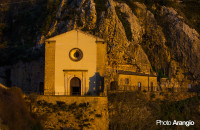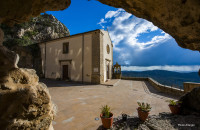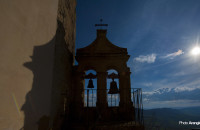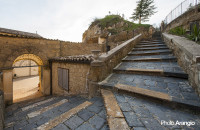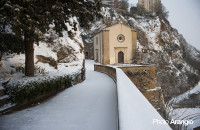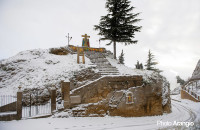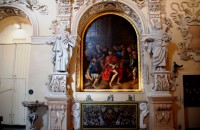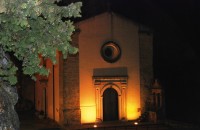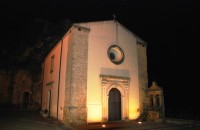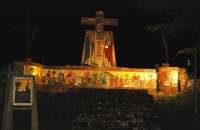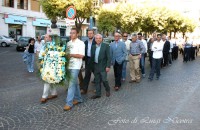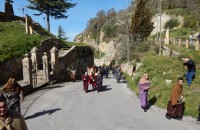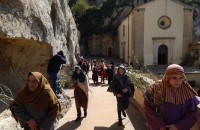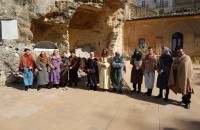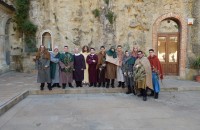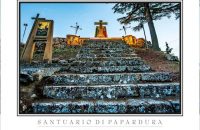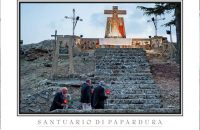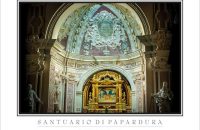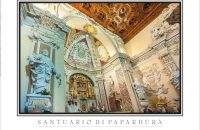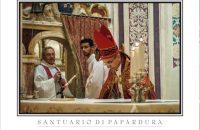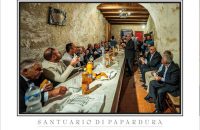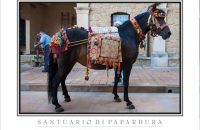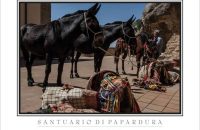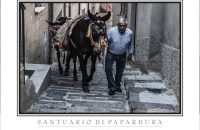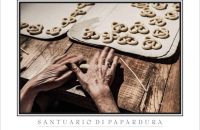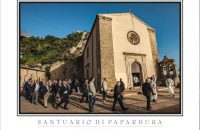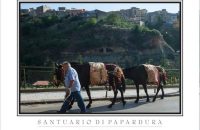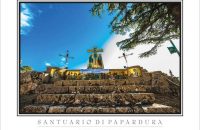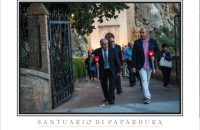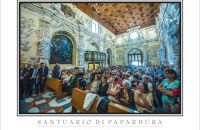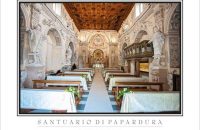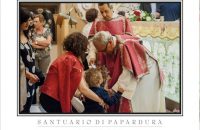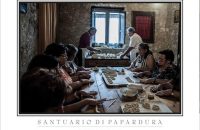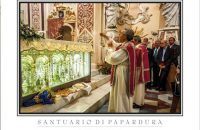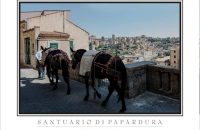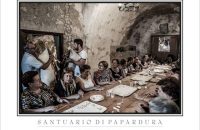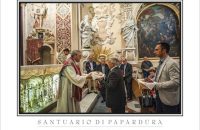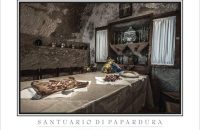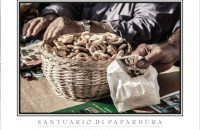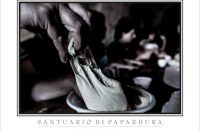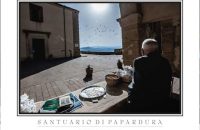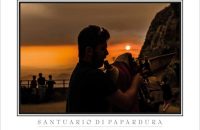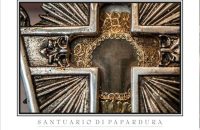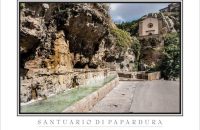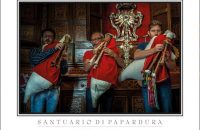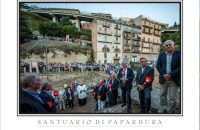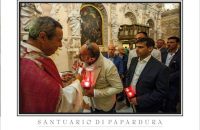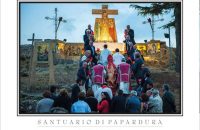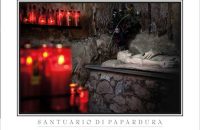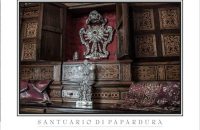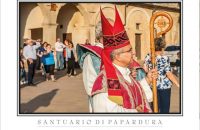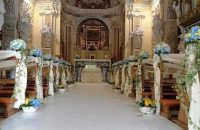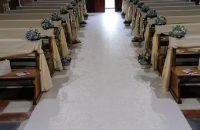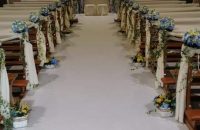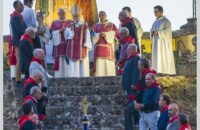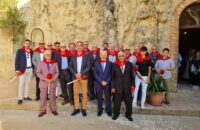The Story of the Sanctuary of the Holy Crucifix of Papardura
The Sanctuary of the Holy Crucifix of Papardura is situated on the slopes, in the southeast of the town of Enna.
The place name “Papardura” gives rise to different interpretations:
- the historian Littara Noto thinks that the name comes from the waters which are plentiful in the area, so Papardura means “ towns with everlasting and substantial waters.”
- Another credible explanation goes back to the Persian origin of the word. “Papar-dura” is the translation of the source water which is “ hard”, the equivalent for rock. Arabs called it in that way to indicate the rock of the flowing water. The expert Salvatore Morgana wasa scholar of Christian events related to the town of Enna. In his pamphlet, published by a “Massari” deputation of the Holy Crucifix of Papardura, he says that farmers and shepherds gathered in the caves of the slopes of Enna to pray the Divine Mercy, during the beginnings of Christianity. In the same caves they lighted the typical oil lamps up.
In the pamphlet above, it is said that in 1546, near Papardura, Mr. Angelo Lo Furco built an oratory inside a cave and on the wall he painted a scene illustrating the Crucifixion.
At a large stage the marks on the cave were lost. The cave was covered by the rubbles coming down from the above. Legend has it that in 1600 about, some pious women dreamed that in the hightest part of the source of Papardura there was a depiction of Jesus Crucified and those several people who preyed in the place described above, they were miraculous success.
In the indicated place the accumulated rubbles over the time were removed and the cave appeared with the image of Jesus Crucified.
A lot of people ran to visit the cave and the voice of the miraculous events spread throughout Sicily.
Still according to the expert Morgana, in 1696 with the contributions from a deputation of prosecutors called “Massari”, a bridge was built in order to raise the church, absorbing the cave where the Holy Crucifix is represented.
It is said that since Christmas 1742 until 30th November 1743, it didn’t rain and it wasn’t windy. After that, there was another difficult winter and the crops were so poor that there was also a considerable famine.
On that occasion, in 1746, a penitential procession to the Sanctuary took place; people who participated were described in this way: “ they were all barefoot and they seemed come from burials; disheveled hair, the rope around the neck, crying and praying.”
When the penitents reached the Church of Papardura. The parish priest of the Church of San Cataldo had words for the occasion and he announced that the prosecutors of the Church in horror of Jesus Crucifird, would have distributed small blessed “collorelle” ( cuddureddre) every year, during the celebration. They were Greek delta-shaped (Holy Cross), made up with unleavened bread dough. They were prepared at that moment to honor the Holy Crucifix, in the hope that such a gesture would have given an abundant harvest of wheat.
“Cuddureddre” flied off the shelves in steals, in order to prevent the famine.
That year the land gave such an abundance of wheat that granaries were not enough to contain it, so that the wheat was also kept in the oratories of the confraternities, filled at the disposal of all.
“Cuddureddre” sanctioned a devotion carried out during the celebration of the Crucifix as an act of thanks giving for the end of the terrible famine, since then and until this day.
It is also said that once in 1699 a heifer belonging to a farmer felt down from a cliff. Falling down, the animal broke the bones of the neck.
The farmer prayed the Crucifix to save the heifer. He wanted the chaplain of the Church of San Cataldo joining him in the ravine under the cliff of Papardura, to bless the heifer facilitating the fulfillment of the requested grace.
The parish priest went there and after the blessing of the heifer, herself stood up as if nothing had happened.
In occasion of the celebration, the farmer donated a heifer to the Sanctuary in order to be cooked and eaten by the prosecutors and by the poorest pilgrims with the duty to send to the parish priest of the Church of San Cataldo the head and the neck of the animal to the join of the body.
Over the centuries and to this day, the Sanctuary which is under the jurisdiction of the parish priest of the Church of Mater Ecclesiae. It was and it is administered by a deputation of prosecutors called “ Massari” who elect a president, a custodian, two councilors and a secretary every two years.
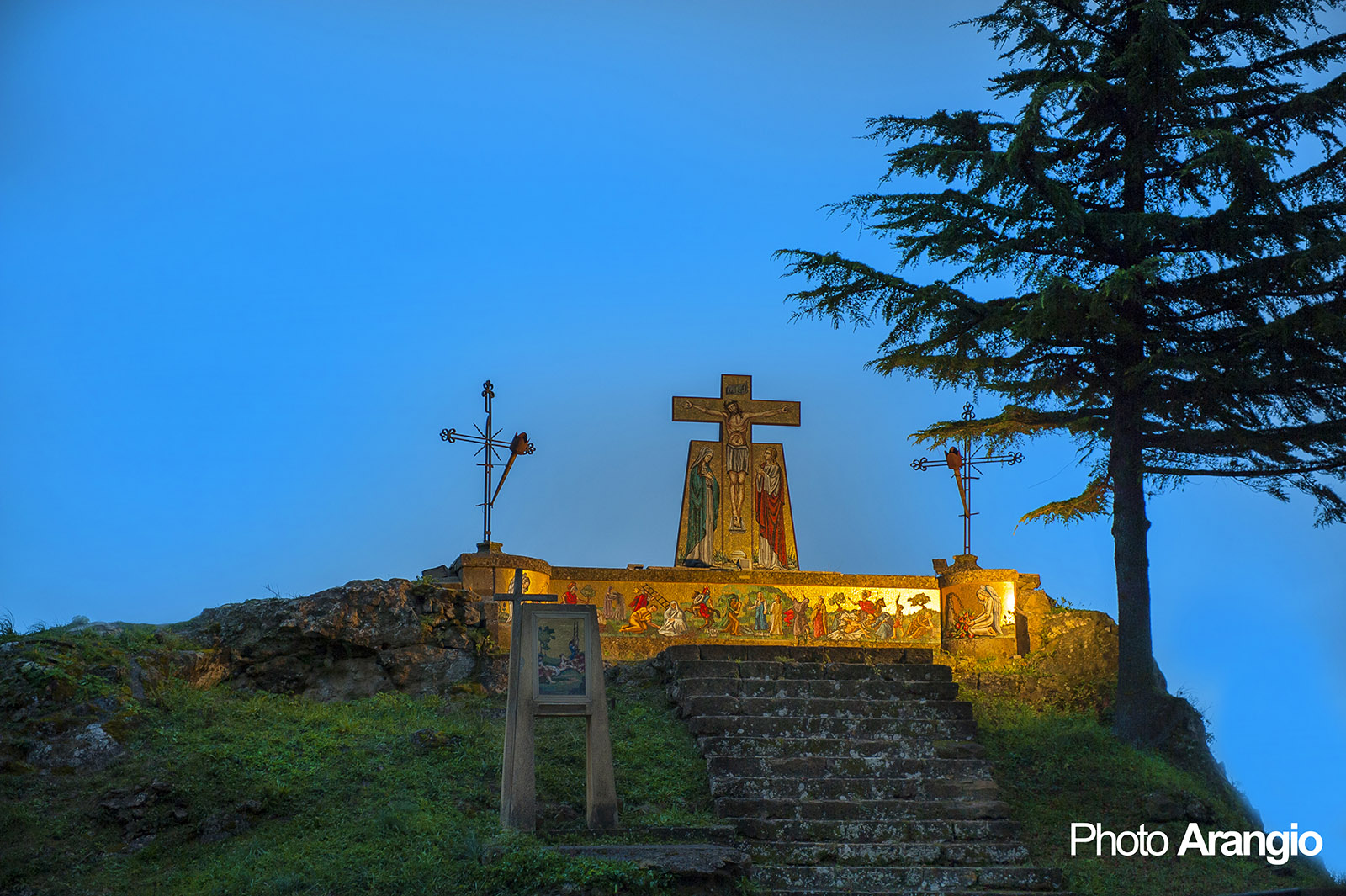
Sulle pendici a Sud-Est della città di Enna sorge il Santuario del SS. Crocifisso di Papardura.



